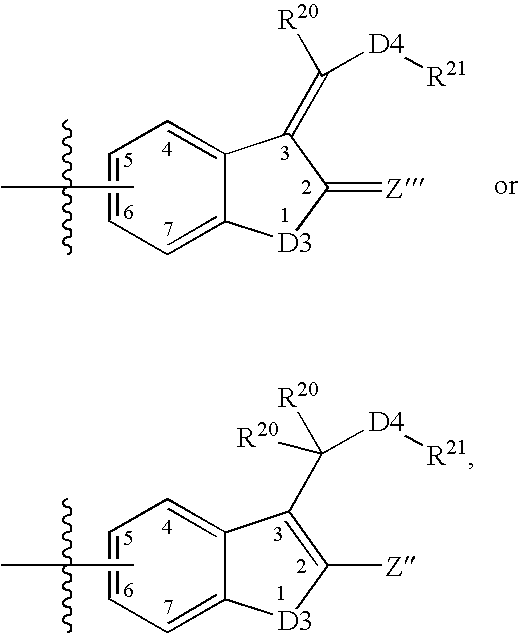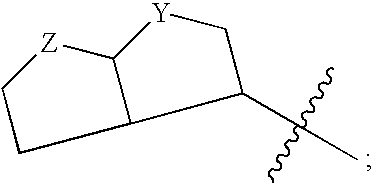Resistance-repellent retroviral protease inhibitors
a protease inhibitor and resistance-resistance technology, applied in the direction of biocide, heterocyclic compound active ingredients, drug compositions, etc., can solve the problems of neurological deterioration, severe compromising of the immune system, death of the infected individual
- Summary
- Abstract
- Description
- Claims
- Application Information
AI Technical Summary
Benefits of technology
Problems solved by technology
Method used
Image
Examples
examples
2-Oxo-2,3-dihydro-1H-indole-5-sulfonyl chloride 141
[0304]
[0305]1,3-Dihydro-indol-2-one 13 (4.43 g, 33.3 mmol) was added slowly to cold chlorosulfonic acid (9 ml, 135 mmol). The reaction temperature was maintained below 30° C. during the addition. After the addition, the reaction mixture was stirred for 2 h at room temperature, then heated to 68° C. for 1 h, cooled and poured into ice water. The precipitate was washed with water and dried under vacuum to give 2-oxo-2,3-dihydro-1H-indole-5-sulfonyl chloride 14 (5.4 g, 70%). MS m / z 229 [MH]+. 1H NMR, CD3CN 8.91 (S, 1H), 7.90-7.95 (m, 2H), 7.04 (d, J=0.11, 1H), 3.57 (S,1H).
[0306]1. J. Med. Chem., 1999, vol. 42, No. 25, 5120-5130.
3-tert-Butoxycarbonylamino-2-hydroxy-4-phenyl-butyl)-isobutyl-carbamic acid benzyl ester 16
[0307]
[0308]To (1-Benzyl-2-hydroxy-3-isobutylamino-propyl)-carbamic acid tert-butyl ester2 15 (94 g, 0.279 mol) in 600 ml THF was added a solution of Na2CO3 (32.5 g, 0.307 mol) in 200 ml H2O. Cbz-chloride (52.4 g, 0.307 m...
PUM
| Property | Measurement | Unit |
|---|---|---|
| temperature | aaaaa | aaaaa |
| apparent viscosity | aaaaa | aaaaa |
| particle size | aaaaa | aaaaa |
Abstract
Description
Claims
Application Information
 Login to View More
Login to View More - R&D
- Intellectual Property
- Life Sciences
- Materials
- Tech Scout
- Unparalleled Data Quality
- Higher Quality Content
- 60% Fewer Hallucinations
Browse by: Latest US Patents, China's latest patents, Technical Efficacy Thesaurus, Application Domain, Technology Topic, Popular Technical Reports.
© 2025 PatSnap. All rights reserved.Legal|Privacy policy|Modern Slavery Act Transparency Statement|Sitemap|About US| Contact US: help@patsnap.com



